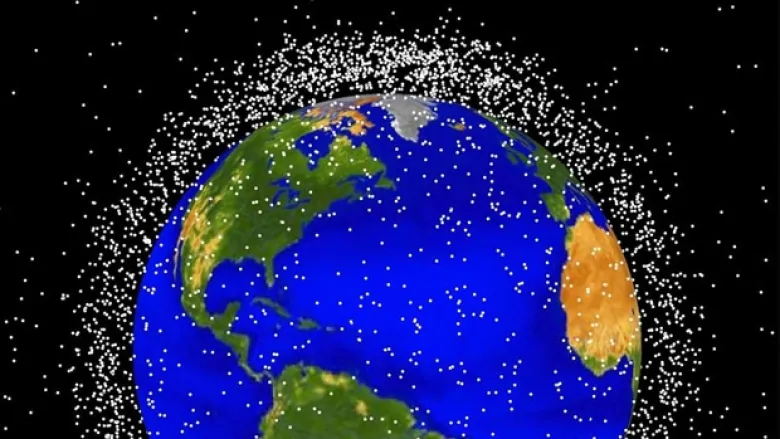First robot-to-robot docking a big step towards dealing with space junk

A robotic servicing satellite brought new life to a defunct communication satellite in a major step towards reducing the growing problem of space junk orbiting Earth.
Aerospace giant Northrop Grumman’s Mission Extension Vehicle (MEV-1), which was launched last October, caught up to, then attached itself to INTELSAT 901, in the first ever docking of two commercial spacecraft. The communication satellite had run low on fuel and was taken out of service in December.
Now that they’ve caught the communications satellite, engineers will do some testing of the new twin spacecraft, and soon the MEV-1 vehicle will use its engines to manoeuvre move the INTELSAT back into its operating orbit so it can resume its telecommunications functions. The operators expect to wring another five years life out of INTELSAT 901. After that, MEV-1 will move both satellites into a slightly higher “graveyard” orbit where they will be out of the way of newer satellites that will replace them.
According to the European Space Agency, there are 5,500 satellites in orbit around Earth, with only 2,200 still operating. In addition to all the dead satellites drifting around, there are also many tens of thousands of smaller but substantial objects, such as pieces from rocket boosters and debris from collisions that have already happened, and millions of tiny, but still dangerous, sub-centimetre-sized fragments.
That’s a lot of junk circling the planet. Objects in low orbit can be travelling at 30,000 km/h, so collisions with even a small piece of debris can cause a lot of damage. As more and more satellites are launched, especially large constellations of small satellites like the SpaceX Starlink project, the problem of space clutter is growing.
This new strategy allows companies like Northrop Grumman to help with that problem by reducing the number of new satellites they need to send up by extending the lives of the old ones. One of the reasons many satellites reach the end of their lives is because they simply run out of manoeuvreing fuel, so a perfectly good, multi-million dollar instrument becomes useless because it can no longer keep itself in position with the antennae pointed at Earth.
A servicing satellite like an MEV could act as a tow truck providing roadside assistance, such as fuel, diagnostics, and in the future, even robotic repairs. They might also be useful for towing derelict satellites into safe disposal orbits so as to avoid dangerous collisions. And perhaps in the future something like MEV could help multiple satellites — moving from one to another breathing life into ailing instruments.
Satellite servicing is not new. The Hubble Space Telescope was visited five times by space shuttle astronauts who installed corrective optics for a flawed mirror, replaced instruments, solar panels, batteries and not only extended its life, but made it a much better instrument than it was when it was launched.
But those servicing missions were very expensive because they were carried out by people. To do that for all the other satellites in orbit would involve astronomical costs, which is why robotic servicing makes so much more sense.

Communication satellites are good targets for refurbishment because they all circle Earth in the same geostationary orbit. This is a ring around the equator 35,785 km high where a satellite takes exactly 24 hours to circle the Earth once, which is the same time it takes Earth to turn in a day. This keeps the satellite over the same spot on the ground, which is why rooftop satellite dishes point to only one spot in the sky.
This arrangement of all the satellites draped around the planet like a string of pearls might make it easier for an MEV to service more than one satellite per flight because they are all lined up in the same orbit. This is quite different from low Earth orbit where satellites are flying around at many different altitudes, speeds and directions, making it difficult to catch more than one at a time.
Other proposals to deal with space junk involve harpoons, nets or even high-powered lasers to drive space junk down into the atmosphere. Servicing satellites like an MEV could be a much more efficient approach in some cases, allowing old satellites to remain functional longer, perhaps reducing the amount of junk that is put up in the first place.





